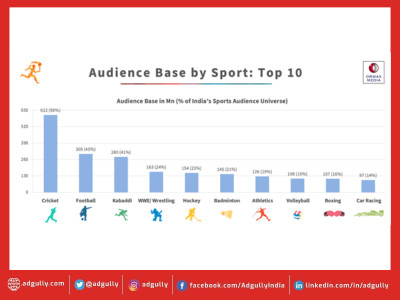Direct-To-OTT or Back to Theatres – The safety over economics dilemma
Film distribution is threatened by disruption as producers of films go to OTT platforms to release new films, skipping the 90-day theatrical window. Multiplex owners, who are incurring losses to the tune of Rs 80-90 crore every month as theatres remain shut, have publicly cried foul at the opportunism of film producers and OTT platforms.
Amazon Prime Video, Disney+ Hotstar and Netflix have wooed film producers, shelling out as much as Rs 40-65 crore per film. Premium movies tend to attract a high value viewer, besides cost of subscription to OTT platforms is much more reasonable than going to the theatres.
Also read: OTT is a whole new world that is democratic & quite liberating: Manoj Bajpayee
According to a report by Bobble.AI, video on demand platforms like Hotstar, Amazon Prime Video and Netflix saw an 82.63 per cent increase in time spent during the lockdown. Time spent on Netflix increased the most at 110 per cent, followed by Amazon Prime Videos at 98.92 per cent.
Unlike other outdoor media, OTT does not entail a social experience, with solo viewing being the predominant behaviour. Lockdown has increased OTT consumption, and direct-to-OTT release of major films will sustain this consumption even as lockdown restrictions are relaxed. With sustained consumption, OTT players will be able to convert some viewers into lifetime customers.
Films like Sushant Singh Rajput’s ‘Dil Bechara’, Jhanvi Kapoor’s ‘Gunjan Saxena – The Kargil Girl’, Vidya Balan’s ‘Shakuntala Devi’, Amitabh Bachchan and Ayushmann Khurrana’s ‘Gulabo Sitabo’, Akshay Kumar’s ‘Laxmmi Bomb’, Manoj Bajpayee’s ‘Bhonsle’ and Ajay Devgn’s ‘Bhuj’, among others have been acquired by OTT platforms. OTT platforms are seen as benefitting from these acquisitions even when things return to normal.
According to Girish Menon, Partner and Head Media and Entertainment, KPMG, “We believe that direct to OTT releases are not likely to vanish once the lockdown ends. It will be a new normal, with both mediums of film exhibition co-existing.”
Film producers have explored digital premieres as an alternative to theatrical releases, which were not possible during the lockdown months. From a revenue perspective, the 1,800+ films that are produced annually in the country have another platform to distribute their content. Not all of them can afford theatrical releases. For OTT platforms, which are still mostly investor funded, acquiring good Independent films with smaller budgets serves them from a cost effectiveness perspective.
Jehil Thakkar, Partner, Deloitte, observed, “The arrangement between film producers and OTT players is purely economics. The fact that OTT is an on-demand platform means that the reach signifies how many people can potentially watch. People will choose to watch only when they feel like it, because it is not appointment viewing but rather on-demand viewing. Therefore, the number of viewers who actually watch the film is much lower in numerical terms.”
According to Ormax Media’s ‘Back to Theatres’ report, 82 per cent of the survey respondents said that miss going to the theatres during the lockdown. Most respondents believe that they will visit theatres within 2-3 weeks of opening. Factors like social distancing, hygiene, and safety precautions will play a role in their decision to visit cinema halls.
“Outdoor consumption of entertainment in India revolves around visiting malls, theatres, parks, play areas, picnic spots, etc. These experiences are more social in nature, involving families or friends. In the light of COVID-19, this type of consumption will reduce significantly even when the lockdown is lifted. Till a vaccine is in use, audiences will be cautious, and even theatres and malls will have to implement distancing measures. Hence, in the short term, indoor entertainment (via TV and OTT) will get higher traction. Safety, more than cost concerns, will be the primary reason for choosing indoor entertainment,” pointed out Shailesh Kapoor, CEO, Ormax Media.
If you are a parent you are less likely to visit theatres or public spaces, according to Vivendi’s Future of Entertainment report, which showed that there is a demographic divide in the demand for indoor versus outdoor entertainment experiences. Adults with no children are more likely to step outside and visit public spaces like bookstores, concerts, cinema and live events as they came out of lockdown.



















Share
Facebook
YouTube
Tweet
Twitter
LinkedIn